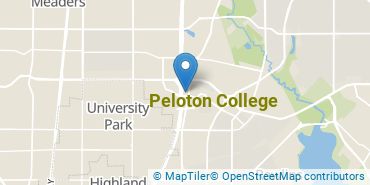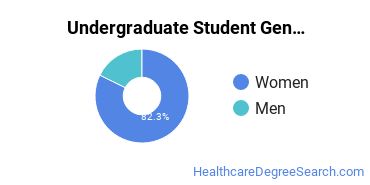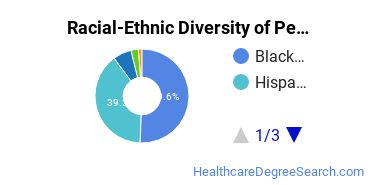Peloton College Healthcare Programs
Located in Dallas, Texas, Peloton College is a private for-profit institution. The location of Peloton College is great for students who prefer living in an urban area.
Featured schools near , edit
Where Is Peloton College?

Contact details for Peloton College are given below.
| Contact Details | |
|---|---|
| Address: | 10830 N Central Expwy Ste 252, Dallas, TX 75231 |
| Phone: | 214-777-6433 |
| Website: | www.pelotoncollege.edu |
Can I Afford Peloton College?
Student Loan Debt
It's not uncommon for college students to take out loans to pay for school. In fact, almost 66% of students nationwide depend at least partially on loans. At Peloton College, approximately 80% of students took out student loans averaging $4,946 a year. That adds up to $19,784 over four years for those students.
Peloton College Undergraduate Student Diversity
Gender Diversity
Of the 131 full-time undergraduates at Peloton College, 9% are male and 91% are female.

Racial-Ethnic Diversity
The racial-ethnic breakdown of Peloton College students is as follows.

| Race/Ethnicity | Number of Grads |
|---|---|
| Asian | 0 |
| Black or African American | 53 |
| Hispanic or Latino | 65 |
| White | 10 |
| International Students | 0 |
| Other Races/Ethnicities | 3 |
Peloton College Healthcare Concentrations
The table below shows the number of awards for each concentration.
| Major | Undergraduate Certificate | TOTAL |
|---|---|---|
| Medical/Clinical Assistant | 79 | 79 |
| Medical Insurance Coding Specialist/Coder | 3 | 3 |
| TOTAL | 82 | 82 |
References
*The racial-ethnic minorities count is calculated by taking the total number of students and subtracting white students, international students, and students whose race/ethnicity was unknown. This number is then divided by the total number of students at the school to obtain the racial-ethnic minorities percentage.
More about our data sources and methodologies.
